Genre: FMV Developer: Digital Pictures Publisher: Sega of America Players: 1 Released: 1992
The SNES was built on Street Fighter II. After failing to make significant strides against the Genesis, Nintendo’s late entry in the 16-bit race was able to secure the then exclusive port of the hit arcade fighter, which had systems flying off the shelves. By the time the game made its way to the Genny the following year, the damage was already done since everyone absorbed into the arcade phenomenon had certainly bought a SNES by then. However, fortune smiled on Sega with the release of 1993’s Mortal Kombat, and the company’s more relaxed content policy and its own already established Video Game Rating Council would allow all the digitized fighter’s gore to make it intact for the home release, something Nintendo would not allow on its system. Despite the Genesis’ limited palette and the vastly superior graphics of the SNES game, the Sega version outsold the competition by way of being the more authentic, bloody experience. In time, Nintendo would look to shed its kiddie image and allow for a gorier MK experience when the sequel rolled around, but this was not the case in ’93.
Seeking to hold its position as the Disney of video games (and avoiding losing gobs of money to the competition in the process), Nintendo of America distributed to the U.S. government clips of violent Sega games, namely Mortal Kombat and Night Trap, in an effort to paint Sega as a purveyor of violent games. It was bizarre then as it is now to see the two games placed on the same level — one a “live action” fighter in which players can dismember opponents, and the other a cheesy B-movie with absolutely no violent or sexual content which would merit above a PG rating if that. That didn’t stop Sen. Liebermann and others from using Nintendo’s carefully culled footage of the game to brand Night Trap as a murder and rape simulator in the witch hunt which followed. For this reason, Night Trap has gained a spot in video game history as a harbinger of the Electronic Software Rating Board (ESRB) video game rating system, a process detailed in Dangerous Games, a short documentary included with the PC version of the game.
The negative publicity also helped Sega sell 50,000 more copies of the Sega CD original in the week following the congressional hearings (after moving just 100,000 in a little over a year after release). While the manufactured controversy assuredly helped Night Trap make a name for itself, the game also was infamous for starring Dana Plato, an actress who had famously robbed a dry cleaner and starred in a variety of porn in the run up to the game’s release. Her troubled post-Diff’rent Strokes life — really, all the Diff’rent Strokes kids fell on hard times after the show — called attention to her billing on the game, although the footage was taped prior to her much publicized downfall.
Night Trap was created in 1987 as a game for an unreleased VHS-based console, Hasbro’s NEMO. Digital Pictures ported its two NEMO games (Night Trap and Sewer Shark) to the Sega CD, as the CD-ROM afforded the company enough space to play back digitized footage of these full motion video games, thus opening the floodgates for the wave of FMV titles which plagued the system. Sure, FMV was something you didn’t see on cartridges, but having players sit through barely interactive spooling video segments wasn’t a suitable replacement for gameplay. While Sewer Shark managed to make a simple yet playable game from these video clips, Night Trap struggled.
The game tasks players to capture augers, trash bag vampires which move with the grace of a zombie Putty Patrol, by monitoring security cameras spread throughout a large home near a lake. The tenants of the home, the Martin family, seem to be involved in the disappearance of a number of young girls and are under investigation by S.C.A.T. — Special Control Attack Team throughout the game, though Lt. Simms in the Sega CD specific introduction refers to the unit as the Sega Control Attack Team. S.C.A.T. has sent in Kelly (Dana Plato) along with a group of teenage girls visiting the Martin house for a slumber party with instructions to protect the girls and investigate the unusual activity at the house. It’s at best a B-movie quality plot which should only appeal to fans of bad movies or the ’80s in general. There are scenes scattered throughout which can be amusing if you catch them, such as Megan talking with her cupped hand in the bathroom or how Jeff is always brushing his teeth. I’m sure the cheesiness of the girls singing the Night Trap theme, the overly dramatic Tony with his indoor sunglasses, and the campy special effects can hold some appeal to those willing to check their brain at the door and just enjoy the dated experience for what it is.
As cheesy at the writing and acting are, there are still things about the story which bug me. Why does an armed S.C.A.T. agent sneak into the house just four minutes into the game, before Kelly has a chance to uncover the Martin family secret? Why does the Martin family have all these traps in the first place when they’ve capable of taking out humans themselves? If S.C.A.T. was already suspicious of the family, why would they needlessly put five girls in harm’s way? You’ve hacked the traps to protect Kelly and the girls from the augers from the outset, so we already know it’s a dangerous situation prior to even stepping foot in the place. While I’m sure a good actor would have difficulty with the weak script, we’re still stuck with Plato and company, which makes the game especially painful to watch at times. Choice moments include the ridiculous singing of the Night Trap theme — “Yeah! Yeah! All right! Oh my God! Go Megan! Look at Megan! Woohoo!” – along with Collin’s exclaiming, “Vampires! You gotta be jivin’ me!” Even the film set looks cheaply made as it stands, and you can see the wall shaking as the augers move a nightgown clad Lisa through the secret bathroom entrance in the famous scene which sparked the controversy. I know Night Trap wasn’t conceived nor budgeted like a “real” film, but that’s still what we’re playing and essentially how Sega marketed the game, as a playable movie, the next level.
Night Trap is a poor movie. As a game, it’s fairly innovative but fails by successfully carrying out its mission. The problem with Night Trap is that while the game was shot as a short film (about 25 minutes long but boasting 1½ hours of video), playing the game means that you have to ignore all of the interplay between the family and the girls in favor of seeking out augers to trap in what amounts to a series of quick timer events (QTEs). Even the two-minute S.C.A.T. team introduction Digital Pictures added to the Sega CD game overlaps the movie, too, forcing you to cut off Lt. Simms (J. Bill Jones) immediately if you hope to capture the augers in the hall or check out the family before the girls arrive. Players must flip through eight rooms of the house, checking to see if an auger is present. When an auger is on camera, a meter rises to indicate when a trap can be activated. You must even ignore the video following a successful trapping if you hope to nail all 95 augers in the game, leading to what amounts to fairly dull security work. I like how all of the events happen in real time, with multiple scenes occurring simultaneously, but that makes it impossible to watch everything at once since mid-80s S.C.A.T. technology only allows for one camera to be active at a time (although it conveniently allows for movie style camera angles and cutaways whenever something is going on in a room).
The gameplay is clearly designed around the limitations of a VHS system, and while it works here fine, it’s just not an enjoyable experience. The CD-ROM add-on may have opened up the possibility of streaming video on a Genesis, but the system’s color limitations render the footage grainy and messy. The driveway camera in particular is just a washed-out mess with little perceivable detail due to all of the dark colors, and the system struggles to paint the scene in any shot involving a group of characters or action, leaving the game with a heavily dithered look. Since the game was made for VHS, no thought or planning went into designing sets and costumes around the 64-color palette. Codec improvements later on would allow Digital Pictures acceptable video quality in games such as Double Switch, but Night Trap is the first of the company’s experiments, and it suffers for it. The ugly GUI and cramped display make the game look uglier still, and any sense of awe from seeing video spooled through a Genesis has long been lost.
It’s not just the system’s inability to deliver VHS quality video which hurts Night Trap but rather the slim distinction it holds as a playable game. While the title allows for more variables and control than something like Dragon’s Lair, Night Trap is terribly limiting. One button selects the camera, another triggers traps, and the third rotates the access codes. Along with multiple endings, these access codes are Digital Pictures’ attempt to make the game replayable, having members of the Martin family change the code to the traps at certain points throughout the game. This means following the Martin clan around when they are in the house to pick up on their conversations, ignoring the augers and allowing your capture rate to plummet. The codes are random, and while you can guess codes by testing them on augers, you’ll miss out on activating traps until the correct code is stumbled upon. This makes the Japanese version tough to play through but not impossible since the game only requires you to capture a third of all available creatures captured to complete the game, giving players a chance to complete the game even with the language barrier.
The Japanese version is based upon the original Sega CD release of Night Trap in 1992, complete with fully voiced Japanese dialogue and changes to on-screen text (including English to English changes, which is odd). The jewel case artwork is plastered with shots of the NEMO tape as it clearly has more color depth and detail than what is found on the discs. The original U.S. version was released in one of those horrid cardboard boxes with cover art invoking the game’s B-movie feel. Following the congressional dustup, the game was banned by retailers for a while, reemerging in the new Sega CD plastic cases, sporting an M-rating and uglier remade cover art highlighting Dana Plato and the family. This remake also used a different S.C.A.T. FMV opener, one with a bland background — featuring a barely visible command center but with improved color depth as a result — and swapping out the Sega three-button pad for a Night Trap branded control. It would appear that this and the variant bad endings with Lt. Simms are just alternate footage likely shot at the same time as the original opening, but it’s bizarre that Sega felt that the switch was even necessary.
Ultimately, Night Trap in any form is a coffee table book of a game, better as a conversation piece but nothing I believe most people would want to play for enjoyment. The game aspect only serves as a continued, unwanted intrusion throughout the film, and the repetitive experience will ensure it gathers dust on your shelf. If you want to watch the Night Trap movie, then you’re better off just watching it on YouTube as the enhanced video quality of the 3DO, Sega CD 32X, and PC versions are still shackled to the unsatisfying switch-based FMV gameplay. At least Dragon’s Lair, terrible as it is, still allowed players to enjoy the wonderful Bluth animation as they played through the arcade machine, something Wolfteam managed to grasp with its anime Sega CD FMV titles. Meanwhile, Digital Pictures continued to mine for a live action video game which just wasn’t there, and while some fared better than others, there just wasn’t a market for these kinds of games and for good reason. As all FMV games do, Night Trap straddles the line of what one can consider a game, and while it’s technically more playable and varied than titles in the QTE mold, it’s just not enough.
SCORE: 3 out of 10

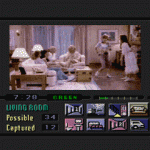
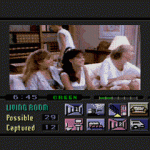
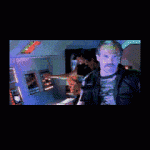
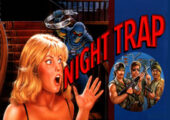
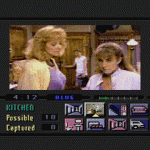
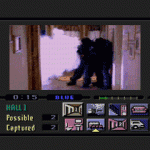
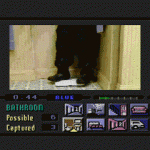
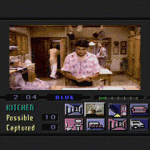
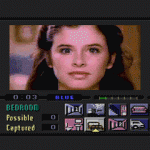
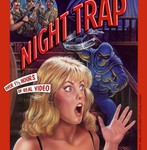
this game is HIGHLY overrated, with all the media hype back in the early 90’s i expected this game to be over the edge, or something like that. it was just another poor quality FMV game for the sega cd. yea sure, nostalgia gives the overall rating a boost but as far as gameplay goes this game is crap. even with a walkthrough i was still completely lost the entire time. a 3/10 is a generous rating in my opinion, but that’s including the nostalgia factor-which meant nothing back in 1992, i don’t know how anyone who bought this game new in 1992 was satisfied with their purchase of 50 or 60 dollars.
I honestly would love to know how anyone managed to find out what to do in this game. The design is terrible, in order to beat the game you have to cut every single cutscene short because there are always enemies popping up in the other rooms and you have to trigger the traps. So you can’t actually watch anything in this game unless you play through it a whole bunch of times.
Trash game.
It may have the worst video quality of all the ports, but for Sega fans this is the version to go for. Being in the SEGA Control Attack Team (with Simms handling the Genesis controller) was a nice touch lost in even the later Sega console releases. How many game companies have gone that far to exclusively accommodate their loyal customer base?
Say what you may about this game. I loved it as a kid.